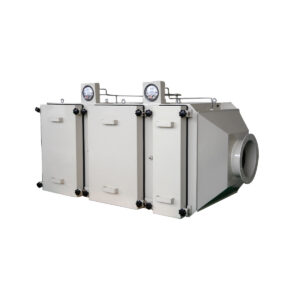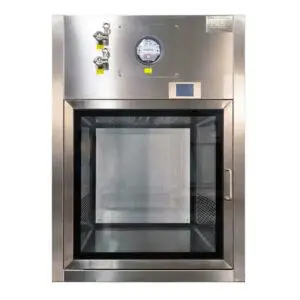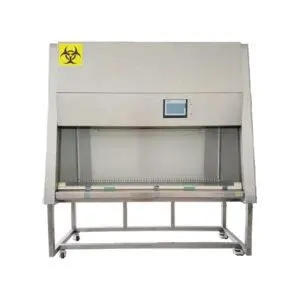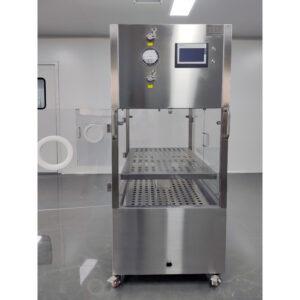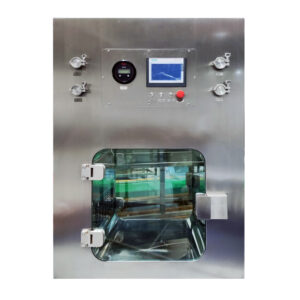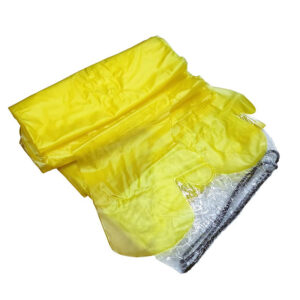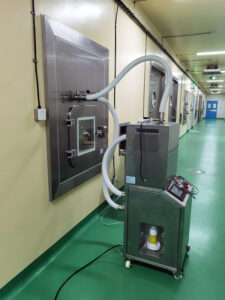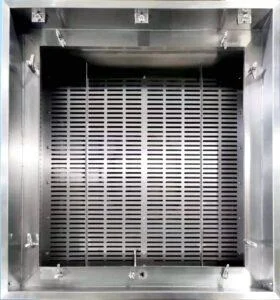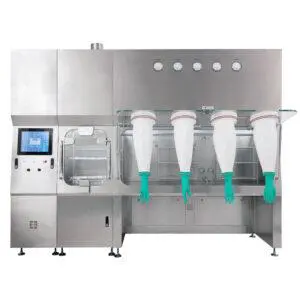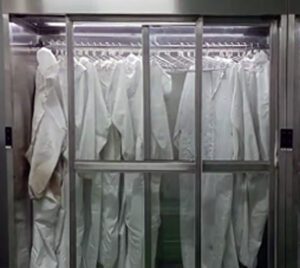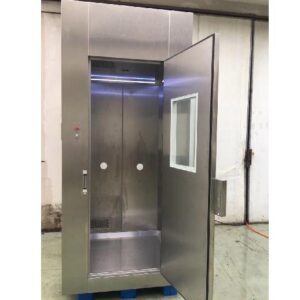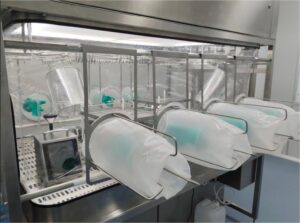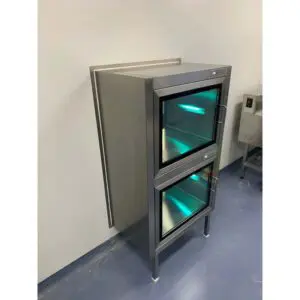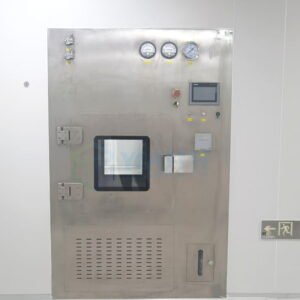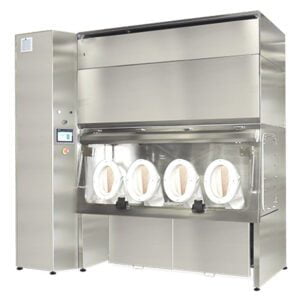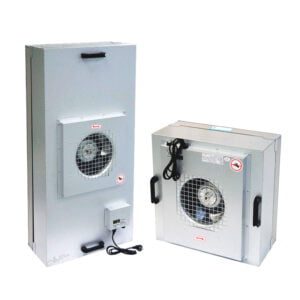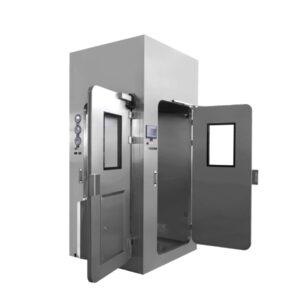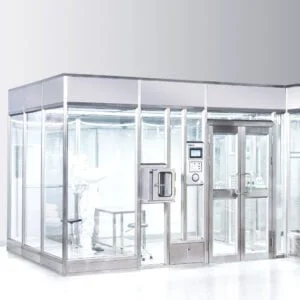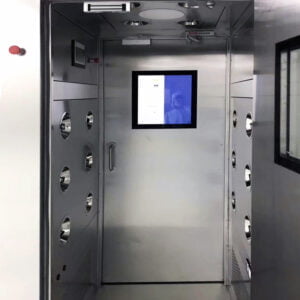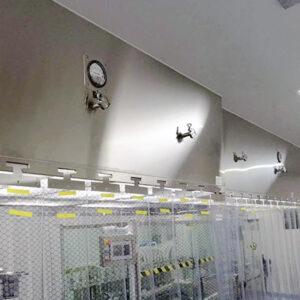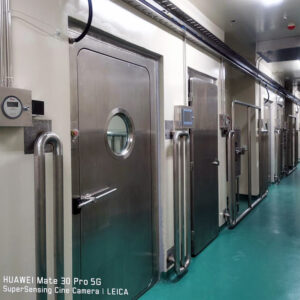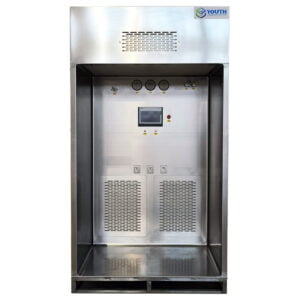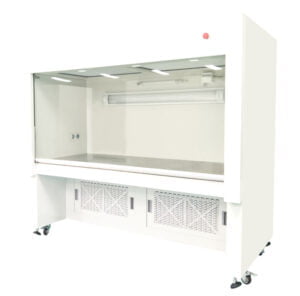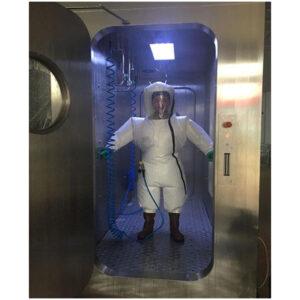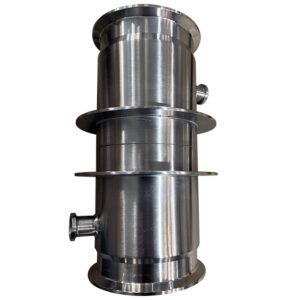Laminar flow hoods are essential components in many scientific, medical, and industrial settings, providing controlled environments for sensitive procedures and processes. However, the effectiveness of these hoods relies heavily on their proper functioning and maintenance. This is where laminar flow hood certification comes into play, ensuring that these critical pieces of equipment meet the necessary standards for performance and safety.
In today's rapidly evolving scientific landscape, the importance of maintaining sterile and controlled environments cannot be overstated. Laminar flow hoods play a crucial role in achieving this goal, but their efficacy depends on regular certification and testing. This process involves a series of rigorous checks and assessments to verify that the hood is operating within specified parameters, protecting both the work being conducted and the individuals using the equipment.
As we delve deeper into the world of laminar flow hood certification, we'll explore the various aspects of this critical process. From understanding the basic principles behind laminar flow technology to examining the specific tests involved in certification, this article aims to provide a comprehensive overview of the subject. We'll also discuss the importance of certification in different industries, the frequency of required testing, and the potential consequences of neglecting this vital aspect of laboratory and cleanroom management.
Laminar flow hood certification is a critical process that ensures the integrity, safety, and efficiency of controlled environment workspaces across various industries, including pharmaceuticals, biotechnology, and healthcare.
What is a Laminar Flow Hood and Why is Certification Important?
Laminar flow hoods, also known as clean benches or laminar flow cabinets, are enclosed workspaces designed to provide a clean, particle-free environment for sensitive procedures. These hoods work by drawing air through a HEPA (High-Efficiency Particulate Air) filter and directing it in a smooth, laminar flow across the work surface. This unidirectional airflow helps to prevent contamination of the materials being handled within the hood.
Certification of laminar flow hoods is crucial for several reasons. It verifies that the hood is functioning as intended, ensuring the safety of both the work being conducted and the personnel using the equipment. Regular certification also helps maintain compliance with industry standards and regulations, which is particularly important in sectors such as pharmaceuticals and healthcare.
The certification process involves a series of tests and checks to assess various aspects of the hood's performance. These may include airflow velocity measurements, HEPA filter integrity tests, and particle count assessments. By conducting these tests, certifiers can identify any issues or deviations from the required standards, allowing for timely maintenance or repairs.
Regular certification of laminar flow hoods is essential for maintaining the integrity of controlled environments, ensuring compliance with industry standards, and protecting the health and safety of laboratory personnel.
| Aspect | Importance |
|---|---|
| Contamination Prevention | High |
| Regulatory Compliance | Critical |
| Equipment Longevity | Significant |
| Worker Safety | Essential |
How Often Should Laminar Flow Hoods Be Certified?
The frequency of laminar flow hood certification can vary depending on several factors, including the industry, specific regulations, and the hood's usage. However, as a general guideline, most organizations recommend certification at least annually. Some industries or applications may require more frequent certifications, such as semi-annually or even quarterly.
In pharmaceutical and healthcare settings, where sterility is paramount, certification is typically required every six months. This higher frequency helps ensure that the hoods consistently meet the stringent requirements for cleanliness and performance in these critical environments. For research laboratories or less regulated industries, annual certification may be sufficient, but it's always best to consult industry-specific guidelines and regulations.
It's important to note that certification should also be performed after any major maintenance, repairs, or relocation of the hood. These events can potentially affect the hood's performance and necessitate a full certification to ensure it still meets the required standards.
While annual certification is common, industries with stringent cleanliness requirements, such as pharmaceuticals, often require semi-annual certification of laminar flow hoods to maintain optimal performance and compliance.
| Industry | Typical Certification Frequency |
|---|---|
| Pharmaceuticals | Every 6 months |
| Healthcare | Every 6 months |
| Research Labs | Annually |
| Food Processing | Annually or semi-annually |
What Tests are Included in Laminar Flow Hood Certification?
Laminar flow hood certification involves a comprehensive set of tests designed to evaluate various aspects of the hood's performance. These tests are crucial for ensuring that the hood provides a controlled environment that meets the required standards for cleanliness and safety. Let's explore some of the key tests typically included in the certification process.
One of the primary tests conducted during certification is the airflow velocity test. This assessment measures the speed of air flowing through the hood, ensuring it falls within the specified range for optimal performance. The airflow should be uniform across the work surface to maintain a consistent, contamination-free environment.
Another critical component of certification is the HEPA filter integrity test. This test checks for any leaks or damage to the HEPA filter, which is essential for removing particles from the air. A photometer is often used to detect any penetration of challenge aerosols through the filter, indicating potential leaks.
Particle counting is also a standard part of the certification process. This test measures the number of airborne particles within the hood, verifying that it meets the cleanliness standards required for its classification. Advanced particle counters are used to detect particles of various sizes, typically down to 0.5 microns or smaller.
Comprehensive laminar flow hood certification includes a range of tests such as airflow velocity measurements, HEPA filter integrity checks, and particle counting to ensure the hood meets stringent cleanliness and performance standards.
| Test Type | Purpose | Equipment Used |
|---|---|---|
| Airflow Velocity | Measure air speed | Anemometer |
| HEPA Filter Integrity | Detect filter leaks | Photometer |
| Particle Counting | Assess air cleanliness | Particle counter |
| Smoke Pattern | Visualize airflow | Smoke generator |
How Does Certification Ensure Compliance with Industry Standards?
Certification of laminar flow hoods plays a crucial role in ensuring compliance with various industry standards and regulations. These standards are designed to maintain consistent quality and safety across different sectors that rely on controlled environments. By adhering to these standards through regular certification, organizations can demonstrate their commitment to quality and safety.
One of the primary standards that certification addresses is IEST-RP-CC002.4, which provides guidelines for HEPA and ULPA filter leak testing. This standard outlines the procedures for testing filter integrity and is widely recognized across industries. Certification processes aligned with this standard help ensure that laminar flow hoods are operating with properly functioning filters.
In the pharmaceutical industry, compliance with USP <797> and USP <800> standards is critical. These standards set requirements for sterile compounding and handling of hazardous drugs, respectively. Certification of laminar flow hoods in accordance with these standards helps pharmacies and healthcare facilities maintain the necessary level of cleanliness and safety in their operations.
For laboratories and research facilities, NSF/ANSI 49 is an important standard that covers biosafety cabinetry. While this standard is specific to biosafety cabinets, many of its principles apply to laminar flow hoods as well. Certification processes often incorporate elements of this standard to ensure comprehensive evaluation of the equipment.
Laminar flow hood certification ensures compliance with key industry standards such as IEST-RP-CC002.4, USP <797>, USP <800>, and NSF/ANSI 49, helping organizations maintain quality, safety, and regulatory compliance in their operations.
| Standard | Focus Area | Relevance to Certification |
|---|---|---|
| IEST-RP-CC002.4 | HEPA Filter Testing | Critical for filter integrity |
| USP <797> | Sterile Compounding | Essential for pharmacies |
| USP <800> | Hazardous Drug Handling | Important for healthcare |
| NSF/ANSI 49 | Biosafety Cabinetry | Applicable principles |
What are the Consequences of Neglecting Laminar Flow Hood Certification?
Neglecting the certification of laminar flow hoods can have serious consequences across various aspects of an organization's operations. From compromised product quality to potential health risks, the impacts of overlooking this crucial process can be far-reaching and costly.
One of the most immediate consequences of failing to certify laminar flow hoods is the increased risk of contamination. Without regular testing and verification, the hood's ability to maintain a sterile environment may be compromised, potentially leading to contaminated products or samples. In industries such as pharmaceuticals or biotechnology, this can result in costly product recalls, wasted materials, and damage to the company's reputation.
Worker safety is another critical concern when certification is neglected. Laminar flow hoods often handle hazardous materials, and their proper functioning is essential for protecting laboratory personnel. A malfunctioning hood that hasn't been properly certified could expose workers to dangerous substances, leading to health risks and potential legal liabilities for the organization.
From a regulatory standpoint, failure to maintain proper certification can result in non-compliance with industry standards and regulations. This can lead to failed inspections, fines, and in severe cases, shutdown of operations until compliance is achieved. The financial and operational impacts of such regulatory actions can be significant and long-lasting.
Neglecting laminar flow hood certification can lead to product contamination, worker safety risks, regulatory non-compliance, and significant financial and reputational damage to an organization.
| Consequence | Impact Level | Potential Outcomes |
|---|---|---|
| Contamination | High | Product recalls, wasted materials |
| Safety Risks | Severe | Worker injuries, legal liabilities |
| Regulatory Issues | Critical | Fines, operational shutdowns |
| Reputational Damage | Significant | Loss of customer trust, market share |
Who Should Perform Laminar Flow Hood Certification?
Laminar flow hood certification is a specialized process that requires specific expertise and equipment. As such, it's crucial to ensure that the certification is performed by qualified professionals who understand the intricacies of these controlled environments and the standards they must meet.
Ideally, certification should be carried out by trained and certified technicians who specialize in cleanroom and controlled environment testing. These professionals should have a thorough understanding of the relevant industry standards, such as IEST-RP-CC002.4, USP <797>, and NSF/ANSI 49. They should also be familiar with the various types of laminar flow hoods and their specific requirements.
Many organizations choose to work with third-party certification companies that specialize in this type of service. These companies often have teams of experienced technicians equipped with the latest testing equipment and up-to-date knowledge of industry standards. Working with a reputable certification company can provide an additional layer of credibility and assurance in the certification process.
It's worth noting that while some organizations may have in-house personnel capable of performing certain maintenance tasks on laminar flow hoods, certification typically requires specialized equipment and expertise that is best provided by dedicated professionals. YOUTH recommends partnering with certified experts to ensure comprehensive and reliable certification results.
Laminar flow hood certification should be performed by trained and certified technicians with specialized knowledge of controlled environments and relevant industry standards to ensure accurate and reliable results.
| Certification Provider | Advantages | Considerations |
|---|---|---|
| Third-party Specialists | Expertise, credibility | Cost, scheduling |
| In-house Technicians | Convenience, familiarity | Limited expertise, equipment |
| Manufacturer Services | Equipment knowledge | Potential bias, availability |
How Can Organizations Prepare for Laminar Flow Hood Certification?
Preparing for laminar flow hood certification is an important step in ensuring a smooth and effective certification process. By taking proactive measures, organizations can help facilitate the certification and potentially improve their outcomes. Here are some key steps to consider when preparing for certification.
First and foremost, it's crucial to maintain regular cleaning and maintenance schedules for laminar flow hoods. This includes routine cleaning of the work surface and interior, as well as regular filter changes as recommended by the manufacturer. Keeping detailed records of these maintenance activities can be helpful during the certification process.
Before the certification, organizations should review their standard operating procedures (SOPs) related to the use and maintenance of laminar flow hoods. Ensuring that these procedures are up-to-date and aligned with current best practices can help identify any potential issues before the certification takes place.
It's also important to schedule the certification at a time that minimizes disruption to regular operations. This may involve coordinating with different departments and planning for alternative work arrangements during the certification process. Additionally, ensuring that the hood is accessible and that any necessary documentation is readily available can help streamline the certification process.
Proper preparation for laminar flow hood certification includes regular maintenance, up-to-date SOPs, strategic scheduling, and ensuring accessibility of equipment and documentation to facilitate a smooth and effective certification process.
| Preparation Step | Importance | Impact on Certification |
|---|---|---|
| Regular Maintenance | High | Improves performance results |
| Updated SOPs | Significant | Ensures procedural compliance |
| Strategic Scheduling | Moderate | Minimizes operational disruption |
| Accessibility | Important | Facilitates efficient testing |
What Trends are Shaping the Future of Laminar Flow Hood Certification?
The field of laminar flow hood certification is continually evolving, driven by advancements in technology, changing regulatory landscapes, and increasing demands for efficiency and accuracy. Understanding these trends can help organizations stay ahead of the curve and ensure their certification processes remain cutting-edge.
One significant trend is the increasing use of digital technologies in the certification process. Advanced sensors and data logging systems are being integrated into certification equipment, allowing for more precise measurements and real-time data analysis. This not only improves the accuracy of certifications but also enables better tracking and reporting of results over time.
Another emerging trend is the move towards more frequent, but less intrusive certifications. Some organizations are exploring the use of continuous monitoring systems that can provide ongoing data on hood performance. While these systems don't replace full certifications, they can help identify potential issues early and potentially extend the intervals between full certifications.
Sustainability is also becoming a key consideration in laminar flow hood certification. There's a growing focus on energy efficiency and reducing the environmental impact of these systems. Certification processes are beginning to include assessments of energy consumption and efficiency, aligning with broader organizational sustainability goals.
The future of laminar flow hood certification is being shaped by digital technologies, continuous monitoring systems, and a growing emphasis on sustainability, leading to more efficient, accurate, and environmentally conscious certification processes.
| Trend | Impact | Adoption Timeline |
|---|---|---|
| Digital Technologies | High | Current – Near Future |
| Continuous Monitoring | Moderate | Near – Mid Future |
| Sustainability Focus | Significant | Ongoing |
| Remote Certifications | Emerging | Mid – Long Term |
In conclusion, laminar flow hood certification is a critical process that ensures the safety, efficiency, and compliance of controlled environments across various industries. From understanding the basics of certification to exploring the latest trends shaping its future, it's clear that this process plays a vital role in maintaining the integrity of scientific, medical, and industrial operations.
Regular certification, performed by qualified professionals, helps organizations meet stringent industry standards, protect worker safety, and maintain the quality of their products and processes. By staying informed about certification requirements and preparing adequately for these assessments, organizations can ensure their laminar flow hoods continue to provide the clean, controlled environments necessary for their operations.
As technology continues to advance and regulations evolve, the field of laminar flow hood certification will undoubtedly see further changes. Organizations that remain proactive in their approach to certification, embracing new technologies and methodologies, will be well-positioned to meet the challenges of tomorrow's controlled environment needs.
For those seeking reliable Laminar flow hood certification services, it's crucial to partner with experienced providers who understand the nuances of your specific industry and can deliver comprehensive, standards-compliant certifications. By prioritizing the certification process, organizations can ensure the continued effectiveness of their laminar flow hoods, safeguarding their operations and maintaining the highest standards of quality and safety.
External Resources
Certification and Testing – USP<797>/<800> – Quality Solutions, LLC – This page details the certification and testing requirements for Laminar Flow Hoods, including the necessary tests such as airflow velocity, HEPA filter leak/challenge tests, and non-viable airborne particle count testing, all in accordance with USP<797> and USP<800> standards.
Laminar Flow Hoods | Testing and Certification – This resource provides information on the testing and certification of laminar flow hoods, highlighting the need for semi-annual testing in pharmaceutical industries and the use of calibrated instrumentation to meet industry standards like IEST-RP-CC002.
Laminar Air Flow Qualification – Degree Controls Inc – This page explains the qualification and testing requirements for laminar air flow hoods, including airflow velocity sensors, smoke testing, and compliance with USP 797, USP 800, NSF/ANSI-49, and OSHA standards.
Laminar Flow Hood Certification – Keystone offers testing, certification, and maintenance of laminar flow hoods to meet IEST-RP-CC-002.4 and manufacturer's standards, with services including HEPA filter integrity testing and airflow velocity profile testing.
Clean Bench/Laminar Flow Hood Testing & Maintenance | TSS – This resource details the comprehensive testing and certification services for clean benches and laminar flow hoods, including HEPA filter integrity testing, airflow velocity profile, and smoke pattern testing, all in compliance with IEST, ISO, and manufacturer specifications.
Laminar Flow Hood Testing and Certification – Global Environmental Solutions (GES) provides testing and certification services for laminar flow hoods, ensuring compliance with regulatory standards through tests such as airflow velocity, HEPA filter integrity, and smoke pattern testing.
Laminar Flow Hood Certification Services – Certified Laboratory Testing offers certification services for laminar flow hoods, including periodic testing to ensure compliance with industry standards, and tests such as airflow velocity, particle counting, and HEPA filter integrity.
Laminar Flow Hood Testing and Certification – Aero Company provides testing and certification for laminar flow hoods, ensuring they meet the required standards through tests like airflow velocity, smoke pattern testing, and HEPA filter leak testing, all in accordance with relevant industry guidelines.
Related Contents:
- Vertical Laminar Flow Hoods: Optimal Protection
- Horizontal Laminar Flow Hoods: Uses and Benefits
- Laminar Flow Hood vs BSC: Choosing Wisely
- Annual Certification for Mobile LAF Carts: Guide
- BSC Certification: Ensure Your Lab’s Compliance
- HEPA Filter Testing: Ensuring Optimal Performance
- Certifying Your Portable VHP Generator: A Guide
- BIBO Certification Process: What to Expect
- Chemical Shower Testing: Post-Installation Certification


